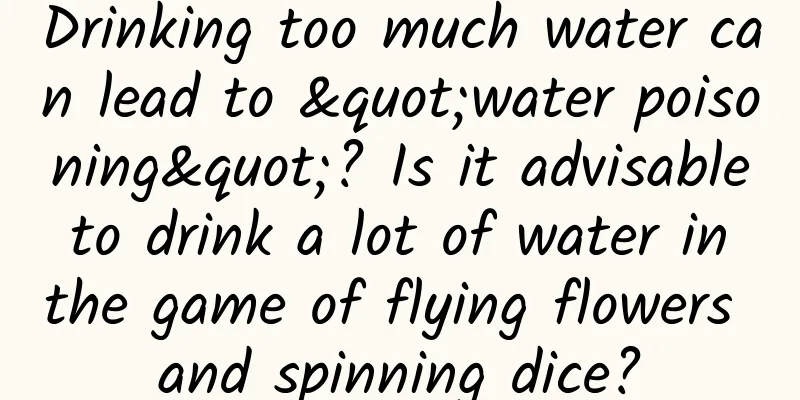Why do birds like to poop black on white cars and white on black cars?

|
Audit expert: Zeng Shenming Professor, Department of Animal Reproduction and Developmental Sciences, China Agricultural University Recently, with the popularity of "Citywalk", more and more people are eager to take a "city walk" at any time. However, even walking has "risks": on the densely shaded streets in the city, we can often see traces of bird droppings that are inconsistent with the floor tiles. Source: pixabay Or like this: Everyone may have experienced the horror of being dominated by randomly falling bird droppings. But have you ever wondered why birds poop black on white cars and white on black cars? 1 Two-pronged approach to bird excretion In fact, birds excrete in two ways: black is bird droppings and white is urine . Under different car background colors, the colors seen by people are different. Therefore, black bird droppings are more obvious on white cars, and white urine is more obvious on black cars. Unlike what we know, bird urine is not transparent, but white and viscous, which is completely different from the shape of human urine. Birds need a lot of energy to fly, so the less weight they carry, the better. In order to make it easier to fly, reduce weight, and adapt to their own high metabolic levels, birds have gradually evolved to have short rectums, strong digestive abilities, no bladders, no feces storage, and excretion anywhere . There is a special physiological structure in the body of birds called the "cloaca", which is the end of the digestive tract and also connects the reproductive cavity and the end of the urethra. In other words, this structure connects the urethra, digestive tract and reproductive tract. Therefore, birds urinate and defecate through the cloaca . The statue with bird droppings on its head, the white part is the source of uric acid丨pixabay Birds' excretory organs have a strong function of reabsorbing water. After water is processed by the powerful kidneys, the water content in the urine is very low, and the remaining waste forms a solid state, which is the urine excreted by birds. The main component of these wastes is uric acid . Uric acid is a highly insoluble substance in water, so bird urine usually appears as semi-solid white crystals. Next time you find bird droppings on the roadside, if you look carefully, you will find white substances mixed with bird droppings, which is its urine. 2Mammals -How do bats pee? As the only mammals that can fly, bats have an amazing superpower - hanging upside down. There is a wide and light wing membrane between the bat's forelimbs, body and tailbone, which is also similar to the wings of birds. Bats can fly freely using their wing membranes. Bats' hind limbs are short and weak, and are also connected to the wing membranes. At the same time, because their bones are hollow and their weight is too light, they cannot walk or stand on their hind limbs. When bats sleep or rest, the most comfortable posture is to hook the claws of their hind limbs on branches or rocks and hang upside down. In case of any emergency, they can also react quickly and open their wing membranes to fly away. You know, as mammals, bats have bladders and can excrete urine, but how do they pee when hanging upside down? Bat source: pixabay As a species with "superpowers", this difficulty is not a problem for them. There is a hook on the top of the bat's forelimbs. When it is hanging upside down and wants to defecate, it only needs to use the small hook on its forelimbs to hook the place where it is hanging and do a "180-degree turn": make its body horizontal, head up, and then stretch its hind limbs downward, presenting a hanging posture again, and then it can defecate downwards . And this ensures that it is clean and will not get any dirt on its body. After defecation, the body can be hung upside down. But sometimes, they also choose to change from an upside-down position to a flying state, and complete excretion during flight like birds, which is actually more convenient for them. 3How do flying insects urinate? Let's first look at the anatomical structure of insects: The excretory system of insects is mainly composed of the Malpighian tubules and the hindgut system. The Malpighian tubules of insects are a closed-end blind tube that grows between the midgut and hindgut, and are the main part of the excretory system. The anatomical structure of insects: A- Head B- Thorax C- Abdomen 1. Antennae 2. Ocellus (front) 3. Ocellus (upper) 4. Compound eyes 5. Brain (cerebral ganglion) 6. Prothorax 7. Dorsal artery 8. Trachea 9. Mesothorax 10. Metathorax 11. Forewings 12. Hindwings 13. Middle viscera (stomach) 14. Heart 15. Ovaries 16. Posterior viscera (intestines, rectum and anus) 17. Anus 18. Vagina 19. Abdominal nerve cord 20. Malpighian tubules 21. Claw pads 22. Claws 23. Tarsus 24. Tibia 25. Femur 26. Trochanter 27. Anterior viscera (crop) 28. Thoracic ganglion 29. Coxae 30. Salivary glands 31. Subpharyngeal ganglion 32. Mouthparts Source: Wikipedia/Piotr Jaworski, PioM The Malpighian tubules act as kidneys to a certain extent, absorbing waste from the blood and transporting it to the insect's hindgut for excretion. The number of Malpighian tubules varies from insect to insect, and different insects have formed interesting biological habits with the help of the excretion of Malpighian tubules.
In the nymph stage, Cicadoidea insects can apply the fluids discharged from the Malpighian tubules and digestive tract to their front legs, which can moisten the soil during the tunnel digging process, making the digging easier and more convenient. At the same time, their excrement will also play a role in reinforcing the completed tunnel. The nymphs of the Cicadidae insects will soak their entire bodies in the foamy secretions of the Malpighian tubules, just like soaking in a natural "shower gel" . However, the purpose of their doing this is not to take a bath, but to avoid natural enemies and other threats from the external environment. There is also a special insect that urinates in a very explosive way. Saad Bhamla, a biomolecular engineer in the United States, was observing a leafhopper when he accidentally discovered that this insect had been doing the same action over and over again. However, this little guy moved so fast that the researchers could hardly see what it was doing with their naked eyes. Later, with the help of a high-speed camera, they discovered that the leafhopper had been ejecting urine drops at high speed ! Once the leafhopper's interesting behavior was discovered, they gave it a nickname - "Sharpshooter". A leafhopper source 丨 Wikipedia/Rankin1958 It may be difficult for you to find small insects like leafhoppers in your life, but the leafhopper's close relative, the cicada, also uses this method to eject its urine droplets. Have you ever felt little "raindrops" falling on you when you walked under a tree? Let me tell you a secret: it might not be rain at all, but the urine of the cicadas chirping happily in the tree ! |
Recommend
iOS 9 exposed a major bug: bypassing the lock screen password to access the photo album and contacts
Data shows that the installation rate of iOS 9 re...
What else can the "heartfelt" Ma Huateng give to Liu Qiangdong?
[[152375]] Who is behind Liu Qiangdong besides Mi...
Zhihu Institutional Account Operation Manual
Last year, I wrote Zhihu Institutional Account Op...
360 search promotion account opening, 360 promotion fees
As a search engine bidding promotion media, 360 S...
How to lose weight on your legs? Yan Jie's "7-step leg slimming training" teaches you how to slim your legs and get slender, straight and simple legs
Training course video lecture content introductio...
It is said that product and marketing experts all "understand human nature". How can you do that?
After working in the product and marketing fields...
The "only three" animals on earth experience menopause, which is actually a good thing?
Who is best suited to write about the topic of &q...
Office workers who make coffee or tea, you may have chosen the wrong time to wash the cups!
In our daily lives, there are many small habits t...
5 Do's and 3 Don'ts in Code Comments
[[135974]] Code comments are arguably more import...
If we analyze a product from an operational perspective, this answer is correct!
% ignore_pre_1 % I have always believed that the m...
How to create content in the tourism industry? Check out these eight super exciting examples!
Leo Tolstoy once said, “All great literature can ...
5 steps to quickly get started with Weibo channel operations!
As the gossip center of the entire Internet, Weib...
Toyota's Chinese factories partially shut down again, chip shortage will cause the automotive industry to lose more than $100 billion
Recently, there were reports that Toyota Motor on...
Who did you learn the secrets of attracting new customers?
In recent years, competition in the online educat...









